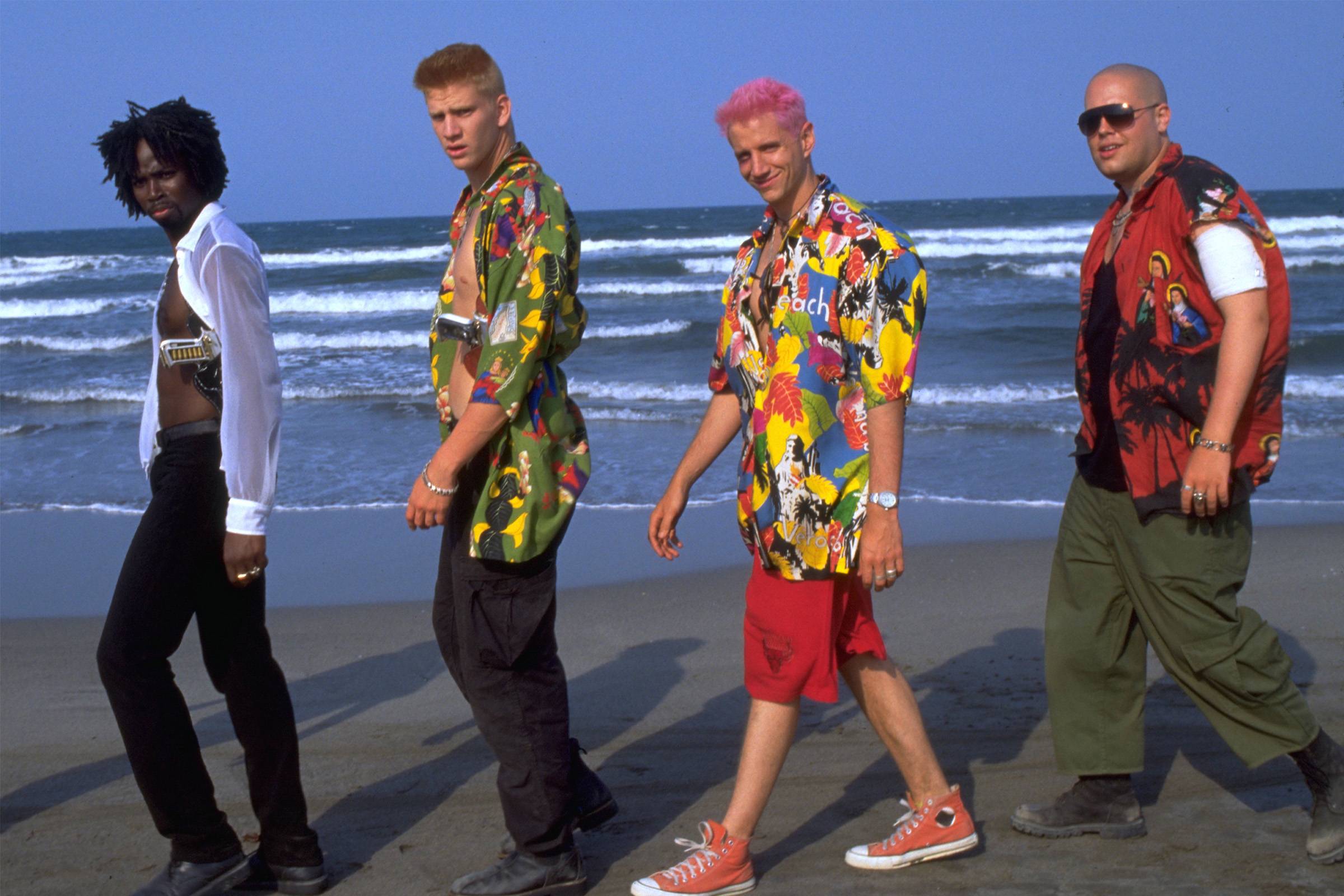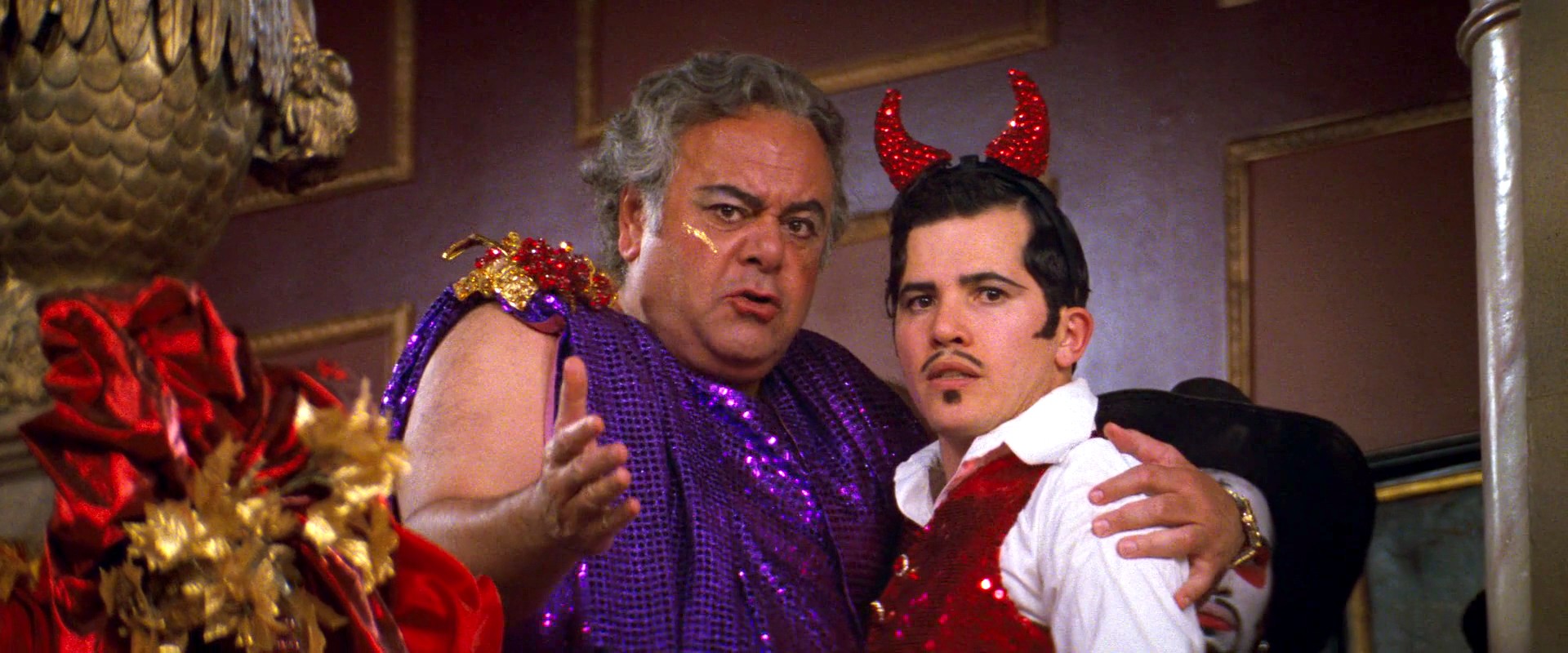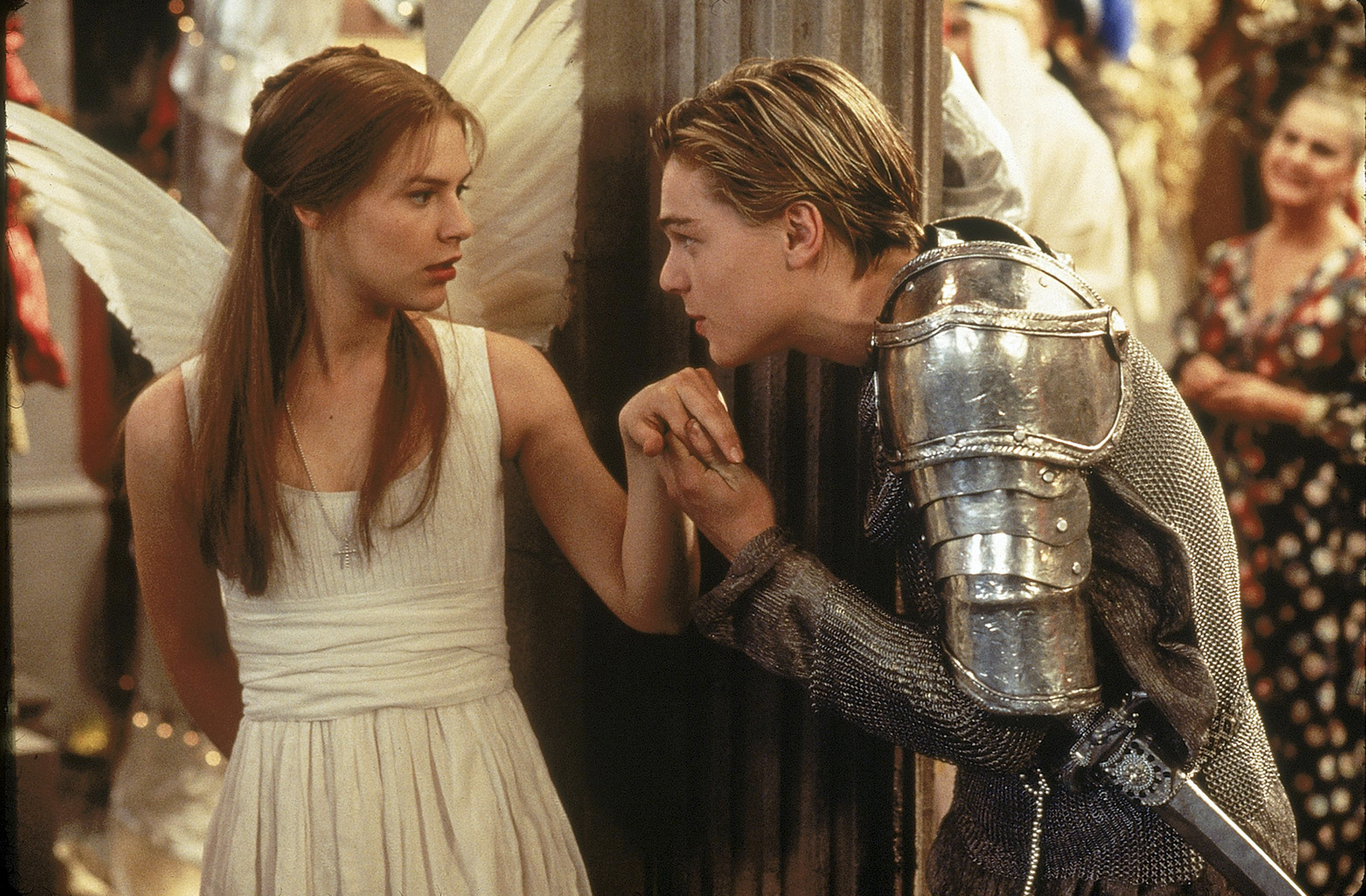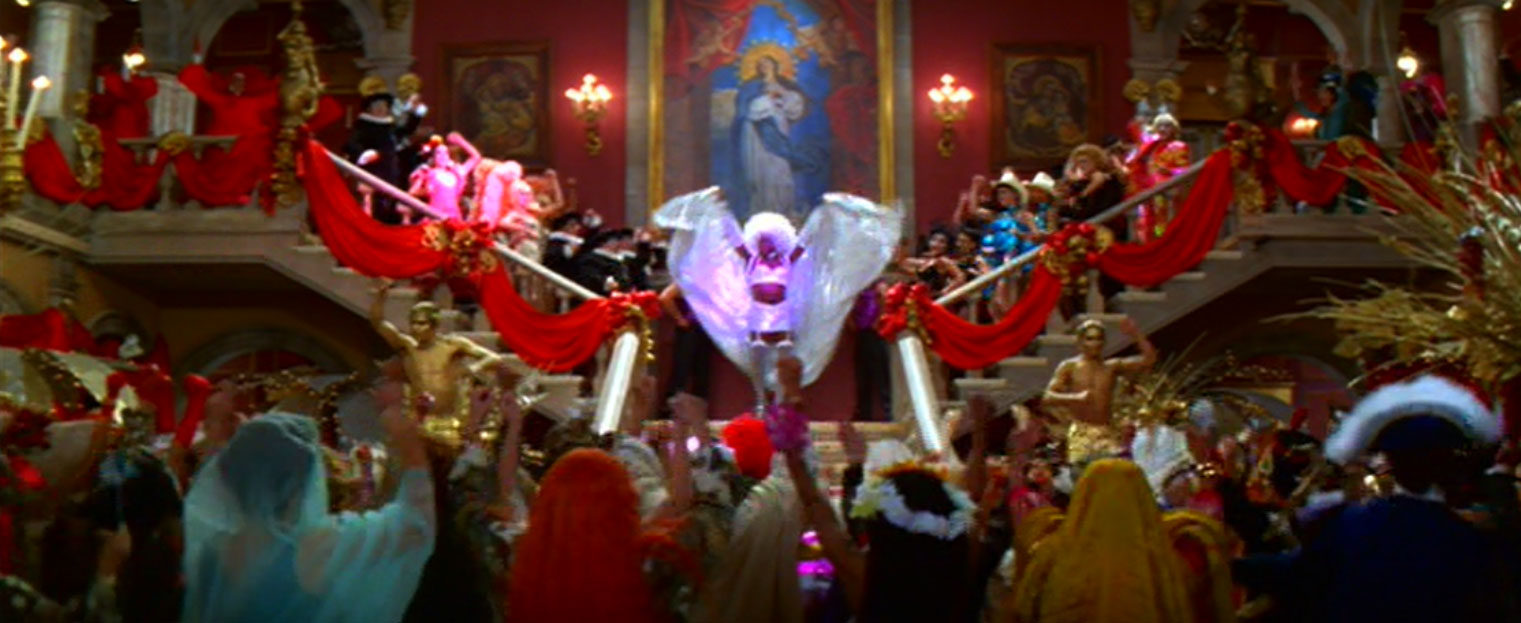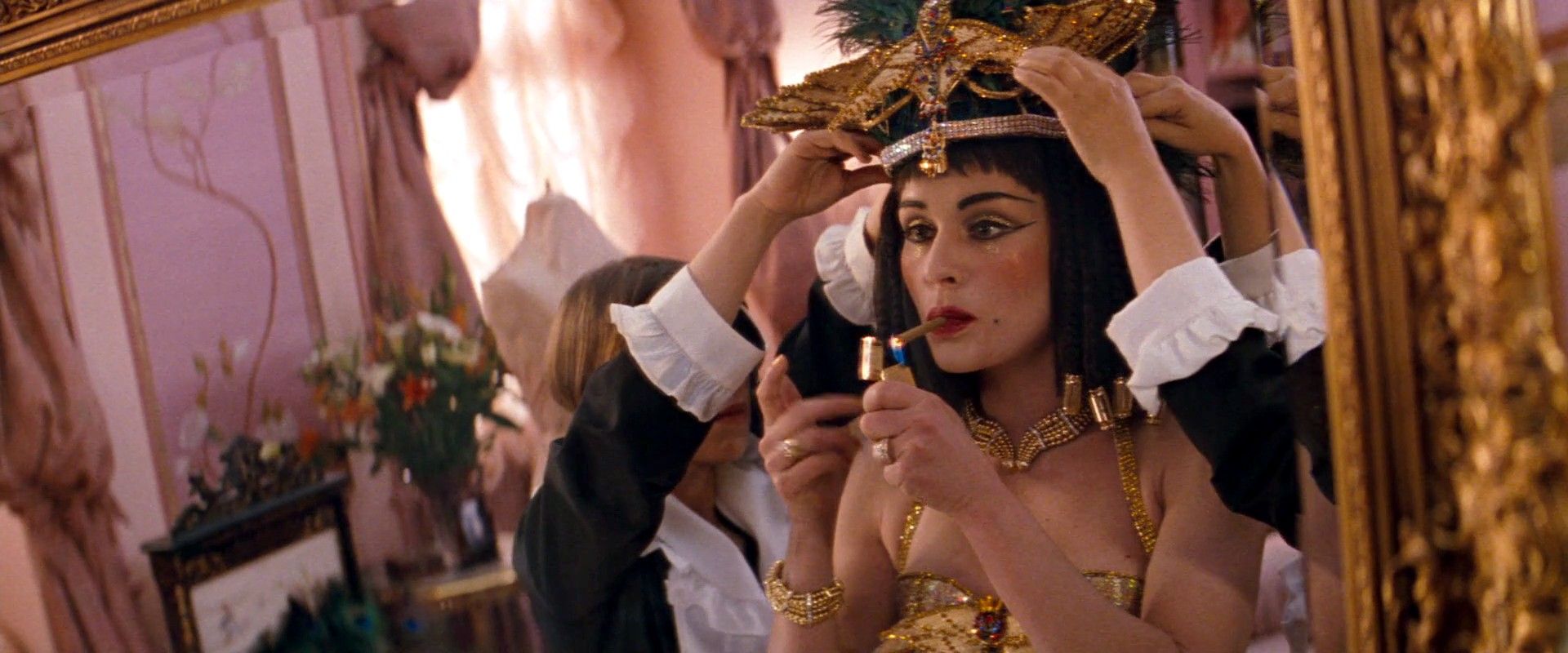The Costuming of Baz Luhrmann’s Romeo and Juliet
By Hannah Schmidt-Rees
Debuting 23 years ago in 1996, Baz Luhrman’s Romeo and Juliet has become one of the most famous Shakespearean adaptations, achieving cult status since its release. Set on Verona Beach (a ‘mix of Miami and Brazil’), Baz Luhramnn’s Romeo and Juliet presents a timeless story, combining traditional Shakespearian language with modern aesthetics. Now whilst I could spend this whole article writing about young Leonardo DiCaprio, the costuming in Romeo and Juliet has become one the memorable aesthetics of all films.
Every part of the film had to have symbolic meaning, including the costuming. The costuming specifically focused to act as ‘non dateable’ objects, meaning that the clothing could not date the film and render it timeless. A modern 90s aesthetic is combined with traditional religious/cultural imagery, with crosses shaved into the characters heads and hanging on chains on their necks. The majority of the costuming influences come from the differences between the Montagues and the Capulets. Whilst they come from the same socioeconomic status, their clothing and wealth is shown in completely different ways.
The Capulet gang, led by Tybalt are dressed in Dolce & Gabbana’s diffusion line; D&G. Dressed in black and streamlined garments create a sense of simplicity, however their accessories are dripping in embellishment. Their hand-crafted belt buckles, shoes, gun holsters and jewellery show off a sense of opulence, with their thick, quilted vests adding a decorative yet protective look. The Montague gang however, are far more laid-back and utilitarian. Created by Prada, their open Hawaiian shirts, workwear pants/shorts and combat boots create a sense of uniqueness and shows the influence of the warm climate. Their spiked and bright pink hair adds another later of distinction, as well as referencing their childish and carefree behaviour.
The inner rebellion of Romeo and Juliet within their respective families however are also shown through their costuming. Whilst Romeo wears unbuttoned Hawaiian shirts and utilitarian clothing, he keeps a sense of simplicity to his look, opting not to dye his hair bright pink or spike it up like the other young members of the Montague family. Whilst the Capulet’s tend to choose black garments, Juliet gravitates towards lighter colours and flowing silhouettes.
“The Capulets’ style is more decorative and the Montague kids are more utilitarian...The Capulets wear ornamental and expensive pieces of clothing, and bullet-proof vests have become required accessories...it’s a place where guns are the norm so life and clothing would have changed to adapt to that. The Capulets are more manicured and preening and wear clothes that are extremely well-cut and body conscious.”
An incredible exhibition of the costuming in Romeo and Juliet is shown in the Ballroom scene, in which Romeo and Juliet meet for the first time. The purity of the young lovers contrasting from the garish and viced guests is directly shown through their costuming. Romeo and Juliet’s costuming are simple; with clean lines and pale/light colours. The guests however are over-the-top and sinister, a mix of different elements and fabrics.
Each character’s costume directly represents their inner motives. Lady Capulet is dressed as Cleopatra; a reference to her possible infidelity and anxiety about her waning beauty. Lord Capulet wears a toga, referencing a roman emperor who is powerful and can do whatever he wants. Tybalt is dressed as the devil, accompanied by two skeletons, which I don’t think I need to explain, but it references Tybalt’s views and his future. Mercutio dressed in drag, showing that he’s not on any side of the feud. And finally; Romeo is dressed as a knight in shining armour, youthful and searching for his love; with Juliet dressed as an angel, representing her beauty and purity, her innocence and naivety.
“The ballroom set was a way of contrasting the simplicity of Romeo and Juliet and their love to the harshness of the world that surrounds them- a world that is more concerned with appearances. It also makes it very clear that there is a reason they are together. They are both outsiders in the extraordinary over-the-top place.”
Kym Barrett’s costuming in Baz Luhrmann’s Romeo & Juliet is a perfect example of how fashion can be used to deepen a character as well as add an unique aesthetic to the overall film. The idea of presenting a Shakespearian story in a modern context seems crazy and unachievable, but choosing unique clothing to match the incredibly unique storyline puts Luhrmann’s adaptation into both a homage to the original, as well as into a league of it’s own.


